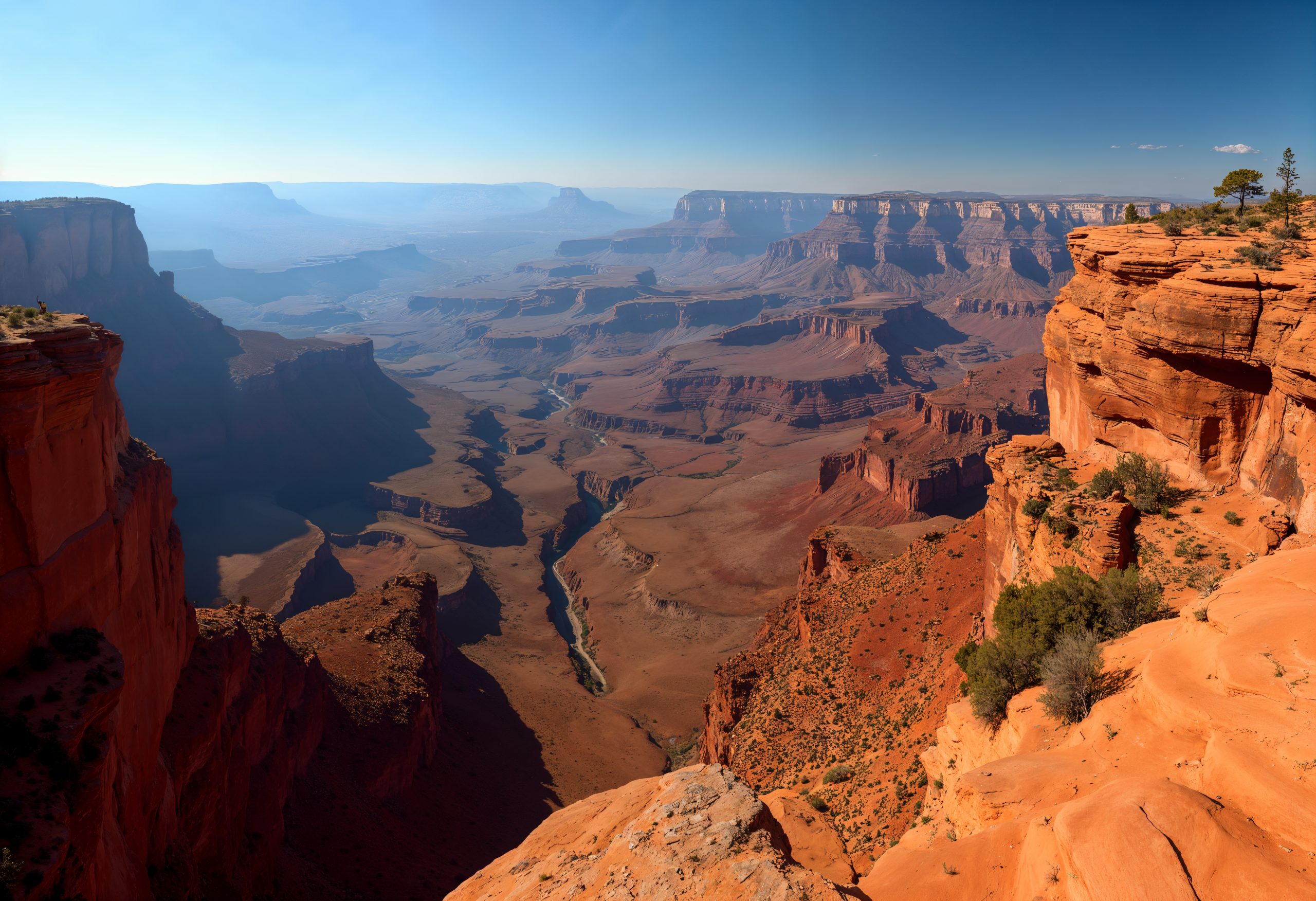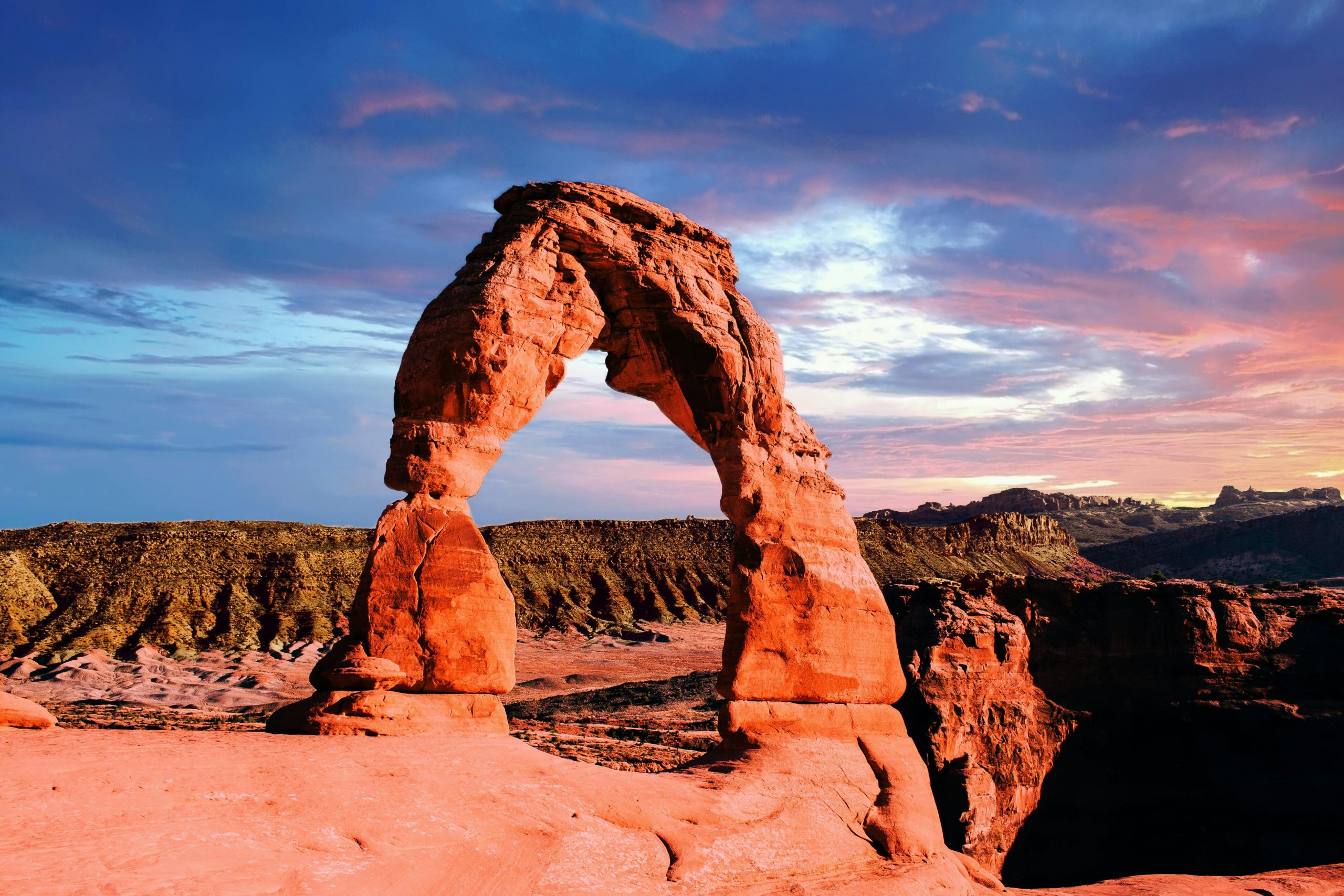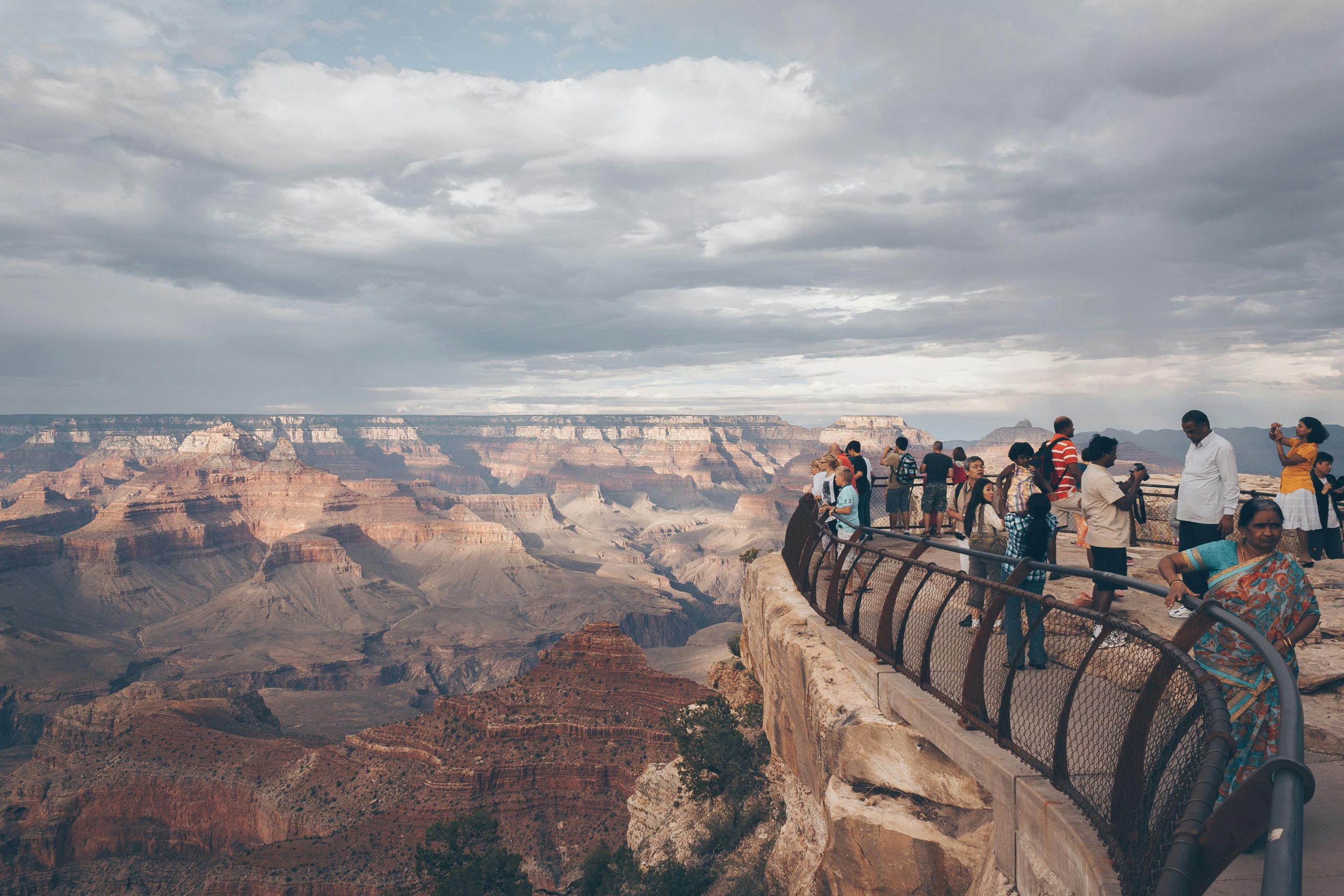

- Spring and Fall Are Ideal: Mild temperatures, manageable crowds, and vibrant scenery make these seasons the best time to visit the Grand Canyon for families.
- Seasonal Activities Matter: Different seasons offer unique experiences—from wildflower spotting and wildlife viewing in spring to snow-dusted vistas in winter.
- Plan Around Weather and Crowds: Summer can be extremely hot and crowded, while winter offers quiet and serene views but limited access to some trails.
- Family-Friendly Hiking and Viewpoints: Trails like the Rim Trail and Bright Angel Trail (shorter segments) and viewpoints like Mather Point, Hopi Point, and Desert View are suitable for all ages.
- Pack Smart and Prepare: Comfortable shoes, layered clothing, sun protection, water, snacks, and first-aid essentials are crucial for a safe and enjoyable family trip.
- Accommodation Choices Affect Experience: Staying inside the park provides convenience, while nearby towns or cabins offer more space and budget-friendly options.
- Interactive and Flexible Planning Enhances the Trip: Include ranger programs, Junior Ranger activities, and flexible schedules to keep children engaged and prevent fatigue.
The Grand Canyon is one of the most iconic natural wonders in the world, drawing millions of visitors every year. If you’re planning a family trip, timing is everything. Visiting during the right season can make the difference between a smooth, enjoyable adventure and a crowded, uncomfortable experience. This guide will help you figure out the best time to visit the Grand Canyon to enjoy perfect weather, breathtaking views, and memorable family moments.
Why Timing Matters for Your Grand Canyon Trip
Visiting the Grand Canyon isn’t just about showing up—it’s about enjoying the experience. Different times of the year bring different weather, crowd levels, and available activities. For families, these factors can affect everything from safety to comfort to how much your kids will enjoy the trip.
Consider these factors when planning:
- Temperature: Summer can be extremely hot, while winter can bring snow and icy trails.
- Crowds: Peak months like June through August are busy, which can be overwhelming for families with young children.
- Wildlife and scenery: Spring and fall often offer the best combination of manageable crowds and vibrant natural beauty.
- Activities: Some hikes and viewpoints are more accessible in certain seasons.
When Is the Best Time to Visit the Grand Canyon?

So, when is the best time to visit the Grand Canyon? While the park is open year-round, your experience can vary dramatically depending on the season. Most experts recommend spring (March to May) and fall (September to November) as ideal times, but each season has its unique advantages and considerations. Here’s a detailed breakdown:
Spring: A Burst of Life and Comfort
Spring is often considered one of the most family-friendly seasons to visit the Grand Canyon.
- Mild Temperatures: Daytime highs typically range from 15°C to 25°C (60–75°F), making hikes and outdoor activities more comfortable for children and adults alike. Evenings can be cool, so a light jacket is recommended.
- Flourishing Nature: Wildflowers start to bloom, adding splashes of color to the canyon’s already stunning scenery. Birds and other wildlife are more active, giving families excellent opportunities for nature spotting.
- Manageable Crowds: Compared to the busy summer months, spring sees fewer tourists, which means easier parking, shorter lines at visitor centres, and a more relaxed pace for exploring viewpoints.
- Special Events: Spring often hosts educational programs and family-friendly activities led by park rangers, adding value for younger visitors.
Fall: Stunning Colors and Crisp Air
Fall is another fantastic season, particularly for families seeking pleasant weather without the summer rush.
- Cooler Weather: Temperatures generally range from 15°C to 25°C (60–75°F), providing ideal conditions for hiking, biking, and exploring scenic overlooks.
- Colorful Scenery: The changing leaves bring warm hues of red, orange, and gold, enhancing the natural beauty and offering spectacular photo opportunities.
- Smaller Crowds: After the summer holidays, the park becomes less crowded, allowing families to enjoy popular trails and viewpoints without the stress of congestion.
- Wildlife Viewing: Animals are more active during fall, and you might catch glimpses of elk, deer, and bighorn sheep preparing for winter.
Summer: Hot but Popular
Summer is the peak tourist season, and while it has some advantages, it requires careful planning.
- High Temperatures: Daytime highs on the South Rim can reach 35°C (95°F), while the canyon floor may exceed 40°C (105°F). Hikes like the Bright Angel Trail can become strenuous, so early morning or late afternoon is best for activity.
- Long Days: Extended daylight hours give you plenty of time for sightseeing, photography, and family-friendly adventures.
- Busy Crowds: Expect large numbers of visitors, which can affect parking availability, trail congestion, and wait times at lodges and restaurants.
- Higher Costs: Accommodations and tours are at peak rates, so booking well in advance is essential.
Winter: Quiet and Unique
Winter offers a completely different experience, ideal for families who enjoy peaceful surroundings and crisp landscapes.
- Snow-Covered Views: The South Rim may be dusted with snow, creating striking contrasts against the red rock formations. Photography enthusiasts will appreciate the serene, almost magical scenery.
- Fewer Tourists: With smaller crowds, families can enjoy a more intimate experience, easier parking, and quicker access to visitor centres and restaurants.
- Limited Access: Some roads, trails, and shuttle routes may be closed or icy, so careful planning is necessary. Layers, waterproof clothing, and sturdy shoes are essential for comfort and safety.
- Indoor Activities: Ranger programs, museums, and lodges provide options for education and entertainment when outdoor activities are limited.
How Weather Affects Your Family Trip
Weather plays a huge role in a family-friendly trip to the Grand Canyon. Extreme heat, sudden storms, or icy trails can turn a fun outing into a stressful day. Here’s a breakdown by season:
- Spring: 10–25°C (50–75°F), mild and comfortable for most activities.
- Summer: 25–40°C (75–105°F), best for morning or evening adventures to avoid peak heat.
- Fall: 10–25°C (50–75°F), ideal for hiking and sightseeing.
- Winter: -5–10°C (20–50°F), bring layers and check road conditions.
Top Family-Friendly Activities by Season
Spring and Fall
- Hiking the Bright Angel Trail (shorter segments for kids).
- Visiting viewpoints like Mather Point and Yavapai Observation Station.
- Wildlife spotting: deer, elk, and bighorn sheep are more active.
Summer
- Explore the Rim Trail early in the morning to avoid the heat.
- Enjoy educational programs at the Grand Canyon Visitor Center.
- Take a rafting trip on the Colorado River (book in advance).
Winter
- Walk along the South Rim and take in snow-covered vistas.
- Visit the Grand Canyon Village and historic lodges.
- Participate in ranger-led programs indoors or at sheltered locations.
How to Avoid Crowds During Your Visit

Even during spring and fall, some areas can get crowded. Here’s how to make your family experience smoother:
- Arrive early or late in the day: Sunrise and sunset offer stunning views with fewer people.
- Visit lesser-known viewpoints: Hopi Point, Grandview Point, and Desert View often see fewer tourists.
- Plan weekdays: Weekends are busier, especially during holidays.
- Use shuttle services: Some popular areas restrict car access, but shuttles make it easy to explore without parking hassles.
Accommodation Tips for Families
Choosing the right place to stay can impact the whole trip. Families should consider:
- Inside the park: Staying at lodges like El Tovar or Bright Angel Lodge offers convenience but comes with higher prices.
- Nearby towns: Tusayan or Williams provide more affordable options while still being close to the park entrance.
- Cabins or vacation rentals: Ideal for larger families wanting kitchen access and extra space.
- Booking in advance: Especially during spring and fall, accommodations fill up fast.
Packing Essentials for a Family Trip
Packing smart makes your trip safer and more enjoyable. Here’s what families should bring:
- Comfortable walking shoes for adults and kids
- Layered clothing to handle fluctuating temperatures
- Sun protection: hats, sunglasses, and sunscreen
- Plenty of water and snacks for hikes
- Binoculars and cameras for wildlife and scenic views
- First-aid kit for minor injuries
Tips for Hiking with Kids
Hiking is a big part of the Grand Canyon experience, but families need to plan carefully:
- Choose age-appropriate trails: The Rim Trail is flat and easy, while Bright Angel Trail can be tailored to shorter sections.
- Start early: Avoid the heat and have more energy for exploring.
- Take frequent breaks: Let kids rest and hydrate often.
- Keep snacks handy: Energy bars, fruit, and water bottles make a big difference.
- Teach safety rules: Stay on trails, watch for cliff edges, and respect wildlife.
Best Viewpoints for Families
Exploring the Grand Canyon doesn’t have to mean long, exhausting hikes. Many viewpoints are easily accessible and offer breathtaking scenery, making them perfect for families with kids of all ages. Here are the top spots to include on your itinerary:
Mather Point
- Accessibility: Just a short walk from the Visitor Center, making it ideal for families with small children or strollers.
- Views: Offers panoramic views of the canyon’s vastness, perfect for photos and first-time visitors.
- Facilities: Nearby restrooms, parking, and picnic areas make it convenient for families to spend time without feeling rushed.
Yavapai Observation Station
- Panoramic Views: Provides wide, unobstructed views of the canyon, including the Colorado River below.
- Educational Displays: Features geology exhibits that help kids and adults understand how the canyon was formed.
- Family-Friendly: Easy to navigate and great for teaching children about nature while enjoying spectacular scenery.
Hopi Point
- Sunset Views: Famous for its stunning sunsets, with fewer crowds than Mather Point.
- Quiet Experience: Offers a more peaceful setting, perfect for families looking to relax and soak in the scenery.
- Photography: Its location provides excellent opportunities for wide-angle shots and capturing the canyon’s natural beauty.
Desert View
- Historic Landmark: Home to the Desert View Watchtower, a fascinating building with murals and a small museum.
- Expansive Views: Offers sweeping vistas that stretch across the canyon, giving families a sense of the canyon’s immense scale.
- Accessibility: Parking is available, and the area has picnic spots, making it a comfortable stop for families.
Making the Most of Your Family Trip
To get the most out of your visit:
- Plan but stay flexible: Kids may need more breaks, so keep a relaxed schedule.
- Include interactive experiences: Ranger talks, Junior Ranger programs, and educational exhibits keep children engaged.
- Capture memories: Photos, sketches, or even small souvenirs help the family remember the trip.
- Balance adventure and rest: Mix hiking with scenic drives and picnic stops to avoid fatigue.
Frequently Asked Questions About Visiting the Grand Canyon
Q: Can you visit the Grand Canyon year-round?
Yes, the park is open year-round, but conditions vary by season. Winter may limit access to some trails and roads, while summer brings extreme heat.
Q: How many days should a family spend at the Grand Canyon?
A 2–3 day visit allows families to explore key viewpoints, take short hikes, and enjoy the visitor centres without rushing.
Q: Are there guided tours suitable for families?
Yes, the park offers ranger-led programs, guided hikes, and educational tours perfect for children.
Q: What’s the best way to get around the Grand Canyon?
Shuttles are efficient for major viewpoints, while personal cars work for exploring less crowded areas. Walking trails are ideal for families wanting a closer experience.
Final Thoughts: Planning Your Family Adventure
Choosing the best time to visit the Grand Canyon ensures that your family enjoys comfortable weather, stunning views, and a stress-free adventure. Spring and fall are the ideal seasons, offering mild temperatures, fewer crowds, and vibrant scenery. Summer and winter have their own advantages, but require extra planning for heat or cold conditions.
With careful preparation—choosing the right season, packing essentials, planning hikes, and selecting family-friendly viewpoints—you can create lasting memories while exploring one of the world’s most breathtaking natural wonders.
Your family journey to the Grand Canyon can be an unforgettable mix of adventure, discovery, and bonding, as long as you plan wisely and enjoy every moment together.